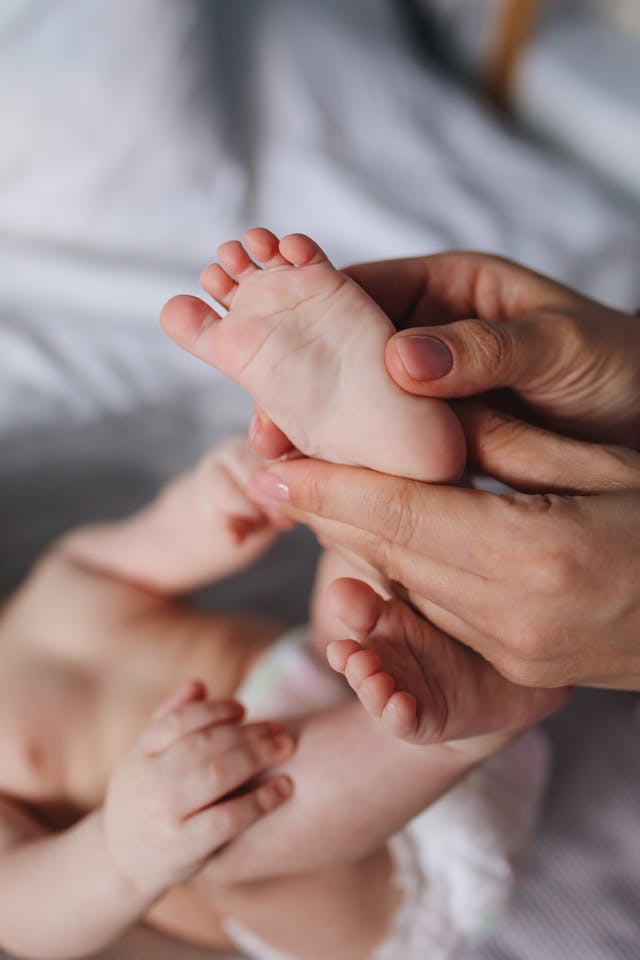Have you ever wondered how to get your baby to have fun while engaging in physical activity? Start with gymnastics poses! This can be an extremely fun experience for both of you. With the right mat and proper poses, what is stopping you? This guide will explore gymnastics poses and the importance of using soft mats. Your kid can develop essential physical skills and have fun at the same time. Let’s dive into the fantastic world of baby gymnastics together!
Table of Contents
Introduction to Baby Gymnastics

Baby gymnastics is a fun way to help your kid develop essential motor skills. It involves simple poses that your little one can do on gymnastics mats. Early introduction to physical exercises instills a love for movement and exercise, which forms the basis of a healthy lifestyle later in life.
These activities help babies bond with their parents, help them understand their bodies, keep them safe, and entertain them. Therefore, let’s embark on our journey into baby gymnastics, where learning meets play.
Importance of Using Soft Mats

Safety during baby gymnastics largely relies on the use of soft mats. Babies cannot balance yet, so they require soft landing surfaces like padded floors to minimize injury risks. These soft mats create a cushioned area for babies to move without worrying about hard surfaces.
Using these gymnastics mats means your little one can spend more time playing, exploring, and enjoying various activities without worrying about safety. Buying a top-notch soft mat guarantees your toddler a safe development space. Remember, with the right kind of mat, you can turn any given way into a secure playground for your child where he or she can have fun.
Simple Warm Up Exercises
It is essential to start with simple warm-up exercises before embarking on complicated baby gymnastics poses. Doing so helps ease your baby into more movements by preparing his muscles and joints. Begin with stretches like moving your baby’s arms and legs in circular motions while lying down. This will help improve flexibility and get their blood flowing.
Basic Baby Gymnastics Poses
Try to engage your baby in some basic gymnastics activities after they’re warmed up. One example is the “baby roll,” which involves gently rolling the baby from back to tummy and back again. This helps with self-awareness and coordination. Another simple pose is the “mini cobra,” where you put the infant on its front and lift its head with its chest to strengthen its upper body muscles.
Then there is also the “sit and reach” pose, which improves flexibility; encourage your kid to sit upright and stretch his or her hands to a toy to be out of reach.
Tips To Parents On Safety
Your baby’s safety is important when engaging in baby gymnastics. Make sure there are no sharp objects or hard surfaces near the gym mat at all times. Do not leave your baby unattended during these exercises. Also, ensure that you dress your little one in a loose dress that will not hinder their movement at any point.
Do not put too much pressure on babies; stick within their limits without physically straining them. Finally, ensure all exercises are done on gymnastics mats to minimize any injuries that may result thereafter. These guidelines promise that babies will safely explore their physical potential.
Activities That You Can Engage In

When you have mastered the fundamentals, there are many fun learning activities you can try with your baby. A gymnastics pose called “teddy bear roll” requires parents to hold their kids close as they roll backward like logs together down on their backsides. It aids in promoting muscle strength plus coordination skills, among others, needed for crawling, standing, and walking.
It helps your baby master new movements, thus making him/her more self-sufficient. Playful activities that boost motor skills also enhance brain development, improving cognitive functions such as problem-solving and spatial thinking. Therefore, start as soon as possible!
Playtime Is Educational
Here are some things you can do:
- Use toys with many colors and playful music to make it more captivating.
- Show enthusiasm and positive feedback to motivate your baby to try new poses.
- Participate in the activities by copying their actions, like you are playing together.
This makes the exercises more exciting while fostering a bond between you and your kid. Remember that the aim is to create an environment where education occurs naturally through playing and promoting physical growth.
FAQs
At what age can my baby start doing gymnastics?
You can start with simple baby gymnastics exercises by three or six months. Make sure these exercises are suitable for their age and ability by paying attention to cues indicating the development stages of your child.
Which mat should I buy for baby gymnastics?
You should look for a thick mat with a soft surface that will not slip off easily. Ensure it has enough padding to protect against falls during movements, accessible clean materials, and a large coverage area.
How many times should I practice this activity with my baby?
Two or three sessions per week, each lasting 10-20 minutes, are recommended. Be careful not to exhaust an infant when he does not want more.
How do I know if my baby wants to quit?
Signs that your baby might need a break include fussiness, crying, rubbing of the eyes, or yawning. Please make sure you put their comfort first and allow regular breaks.
Conclusion

This guide has given you insights on incorporating gymnastics into your little one’s routine with the help of gymnastic poses! These activities must be practiced safely. Remember that your baby should have fun and explore movements at their own pace. As you start with this journey, always prioritize your child’s safety and be on the lookout for discomfort. Being patient and consistent helps babies develop a strong foundation for their lifelong love of physical exercise, which improves overall health.


